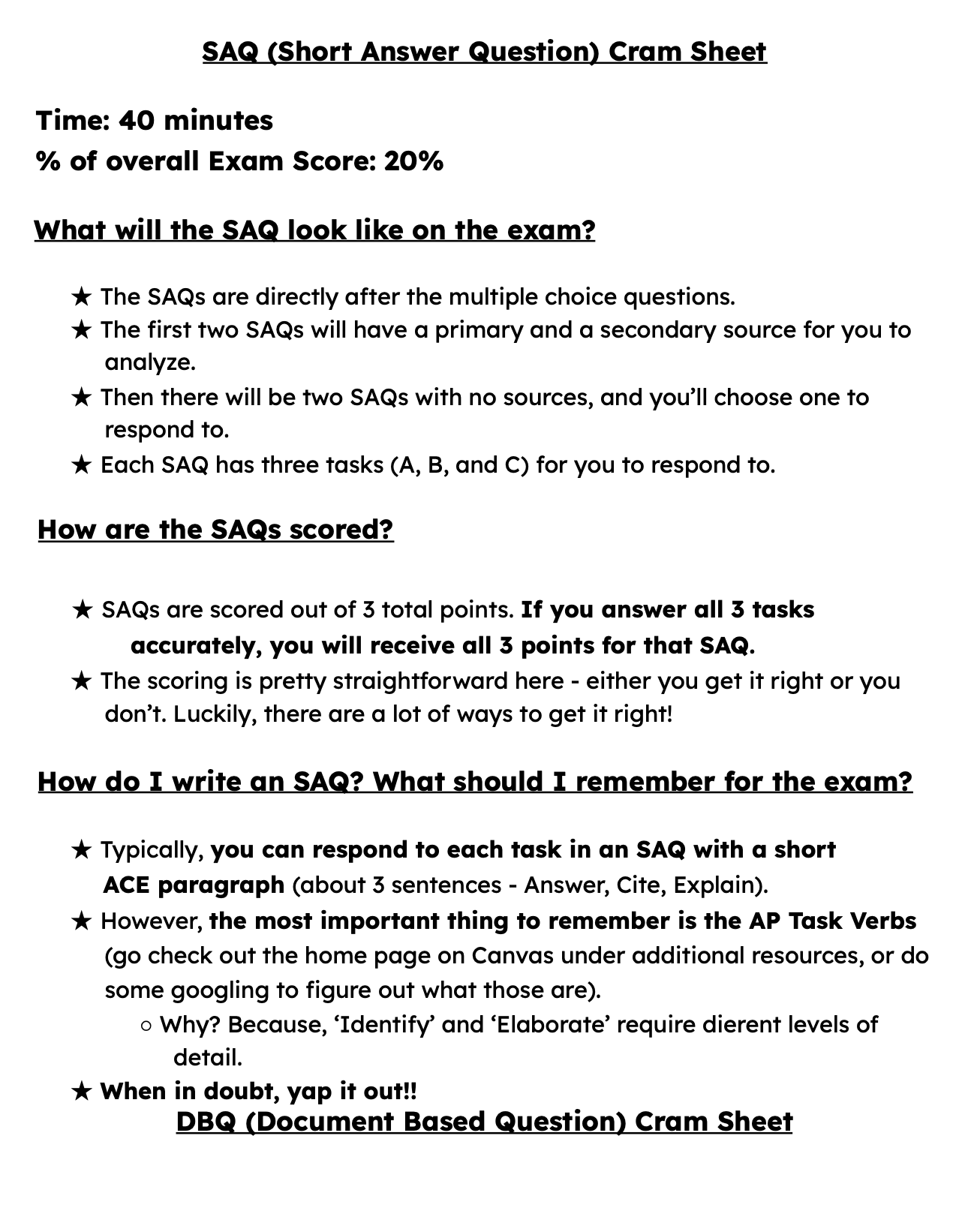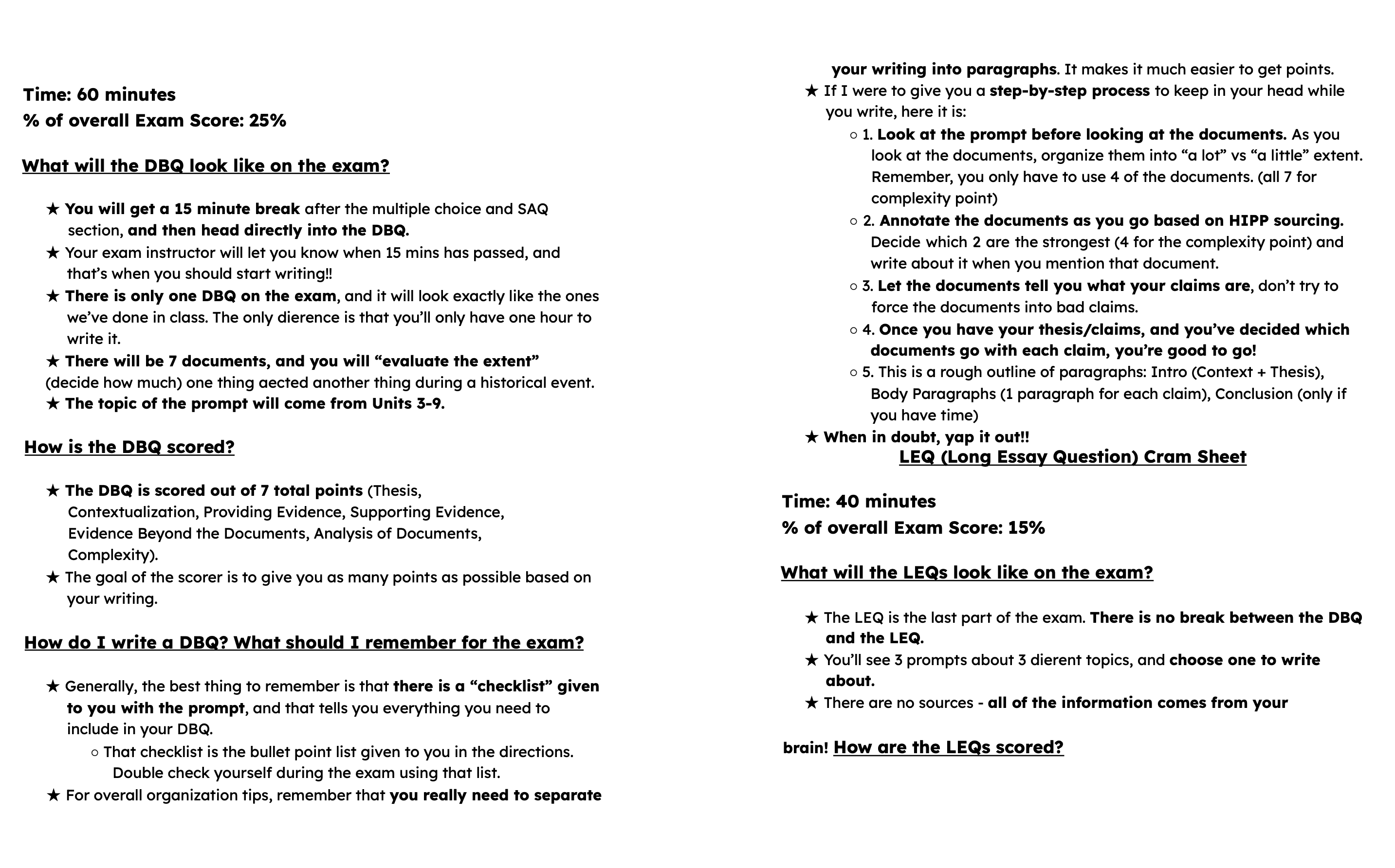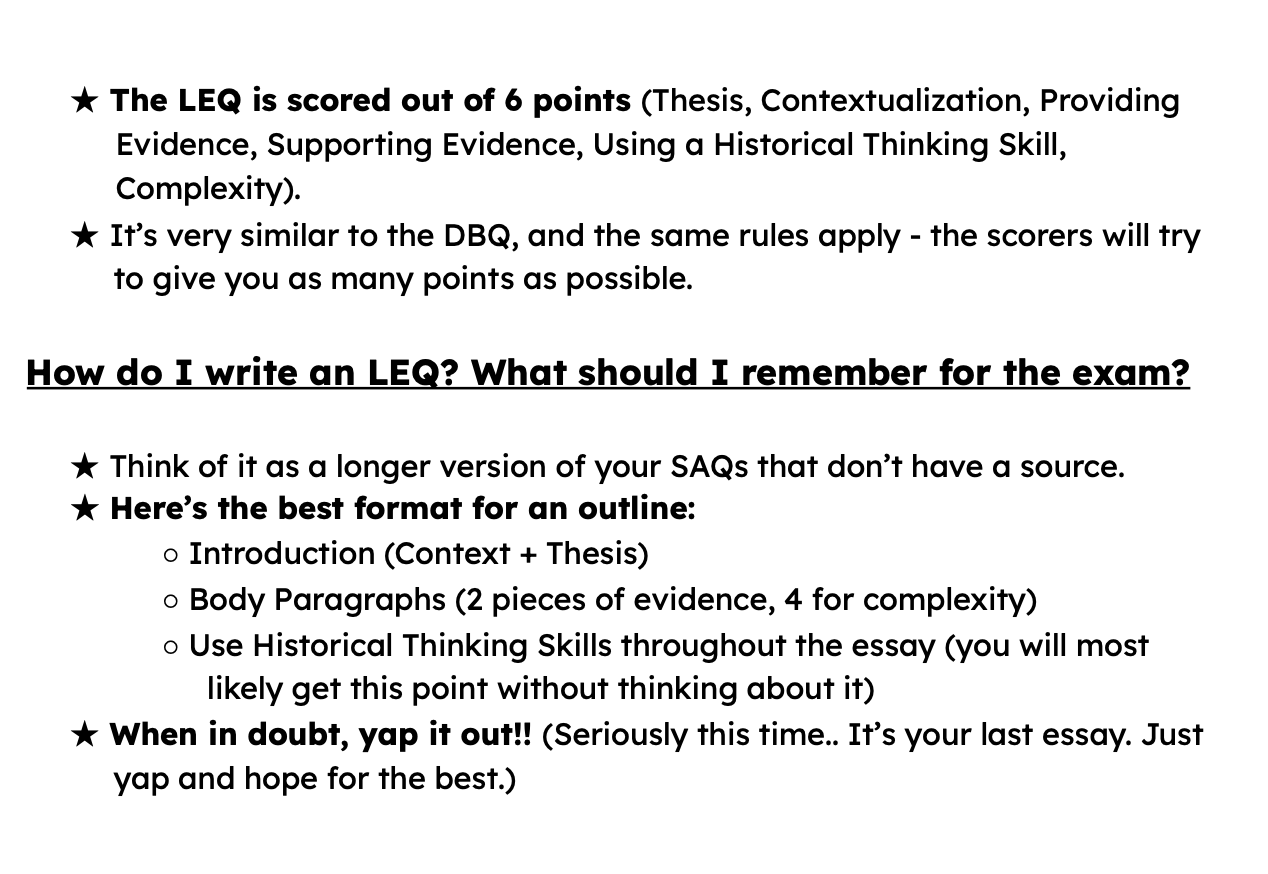Units 1-9 Backbone Stuff
🕰 Period 1: 1200–1450
🧭 Theme: Expansion & Exchange
Global trade networks (Silk Road, Indian Ocean)
Rise of empires (Mongol Empire, Mali, Delhi Sultanate)
Spread of religion and disease
🔁 Patterns:
Trade = cultural exchange + spread of ideas/religions/disease
Empires rise and fall based on military power and control of trade
Climate change (Little Ice Age) affects agriculture and society
📌 Big Ideas:
Trade routes linked distant regions.
Religion (Islam, Christianity, Buddhism) spread with trade and conquest.
The Black Death reshaped Europe and Eurasia.
🏛 Case Studies:
Mongol Empire : Unified Eurasia; facilitated Silk Road trade; introduced new technologies.
Mali Empire : Wealth from gold/salt trade; Timbuktu as a center of learning.
Black Death (1347–1351) : Killed millions in Europe, led to labor shortages and social change.
🕰 Period 2: 1450–1750
🧭 Theme: Globalization Begins
European exploration and colonization
New global trade systems (silver, spices, slaves)
Rise of plantation economies and the slave trade
🔁 Patterns:
Europeans begin to dominate global trade and land.
Crops and animals are moved across continents (Columbian Exchange).
Enslaved Africans forced into the Americas.
Empires expand (Ottoman, Safavid, Mughal, Ming)
📌 Big Ideas:
Colonialism begins in the Americas and Africa.
Mercantilism drives European competition.
Enslavement becomes central to economic growth in the Americas.
🏛 Case Studies:
Spanish Conquest of the Aztec and Inca : Used horses, steel weapons, and disease to conquer large empires.
Atlantic Slave Trade : Millions of Africans were forcibly taken to work on plantations in the Americas.
Ming Dynasty China : Isolationist policies vs. European attempts to trade.
Ottoman Empire : Controlled key trade routes between Europe and Asia.
🕰 Period 3: 1750–1900
🧭 Theme: Industrialization & Imperialism
Industrial Revolution transforms economies
Western powers colonize much of the world
Nationalism and revolutions in Europe and beyond
🔁 Patterns:
Industrialization = urbanization, factory work, class divides
Imperialism = “Scramble for Africa,” Opium Wars, etc.
Revolutions challenge old monarchies and colonial rule
📌 Big Ideas:
Industrial Revolution began in Britain and spread.
Imperialism justifies itself through racism and "civilizing missions."
Nationalism leads to revolutions and independence movements.
🏛 Case Studies:
British Industrial Revolution : Factories, railways, coal, steam engines.
Opium Wars (China) : British forced China to open ports for trade.
Abolition of Slavery : Led to civil wars in the U.S., changes in Caribbean economies.
French Revolution (1789) : Inspired nationalism and democratic ideals.
🕰 Period 4: 1900–1945
🧭 Theme: War, Depression, Totalitarianism
Two World Wars reshape the world
Great Depression causes political instability
Rise of fascism, communism, and totalitarian states
🔁 Patterns:
WWI and WWII caused massive death and geopolitical shifts.
Economic collapse (Great Depression) led to authoritarian leaders.
Ideologies like communism and fascism spread globally.
📌 Big Ideas:
WWI (1914–1918) : Trench warfare, alliances, Treaty of Versailles.
Great Depression (1929) : Economic collapse worldwide.
WWII (1939–1945) : Holocaust, atomic bombs, UN formed.
🏛 Case Studies:
Hitler and Nazi Germany : Aggressive expansion, Holocaust.
Stalin and the USSR : Five-Year Plans, purges, WWII.
Japanese Imperialism : Invaded China, Pacific War.
India under British Rule : Gandhi’s resistance, independence movement.
🕰 Period 5: 1945–1980
🧭 Theme: Cold War & Decolonization
End of colonial empires in Asia, Africa, and the Middle East
Cold War rivalry between US and USSR
Civil rights and social movements
🔁 Patterns:
Decolonization = many new independent nations in post-WWII era.
Cold War = proxy wars, nuclear arms race, space race.
Civil rights movements grow in the U.S. and around the world.
📌 Big Ideas:
Decolonization in Asia/Africa : India, Vietnam, Indonesia, Algeria.
Cold War conflicts : Korean War, Vietnam War, Cuban Missile Crisis.
Civil Rights Movement : Martin Luther King Jr., women's rights, LGBTQ+ rights.
🏛 Case Studies:
India (1947) : Partition, Gandhi, Nehru.
Vietnam (1954–1975) : Viet Minh, Geneva Accords, Vietnam War.
Indonesia (1945–1949) : Sukarno, Dutch return, international pressure.
Korean War (1950–1953) : Divided Korea, Cold War proxy war.
🕰 Period 6: 1980–Present
🧭 Theme: Globalization & Technology
Rapid technological change (internet, digital revolution)
Globalization of economy and culture
Environmental concerns and climate change
🔁 Patterns:
Globalization = more interconnected economies and cultures.
Technology = internet, smartphones, AI.
Environmental issues = climate change, pollution, resource scarcity.
📌 Big Ideas:
Globalization has both positive and negative effects.
Technology changes how we live, work, and communicate.
Environmental challenges affect the entire planet.
🏛 Case Studies:
Green Revolution (1960s–1970s) : Increased food production in developing countries.
World Wide Web (1990s) : Changed communication and business.
Climate Change : Rising sea levels, extreme weather events.
Rise of China : Becomes a global economic superpower.


